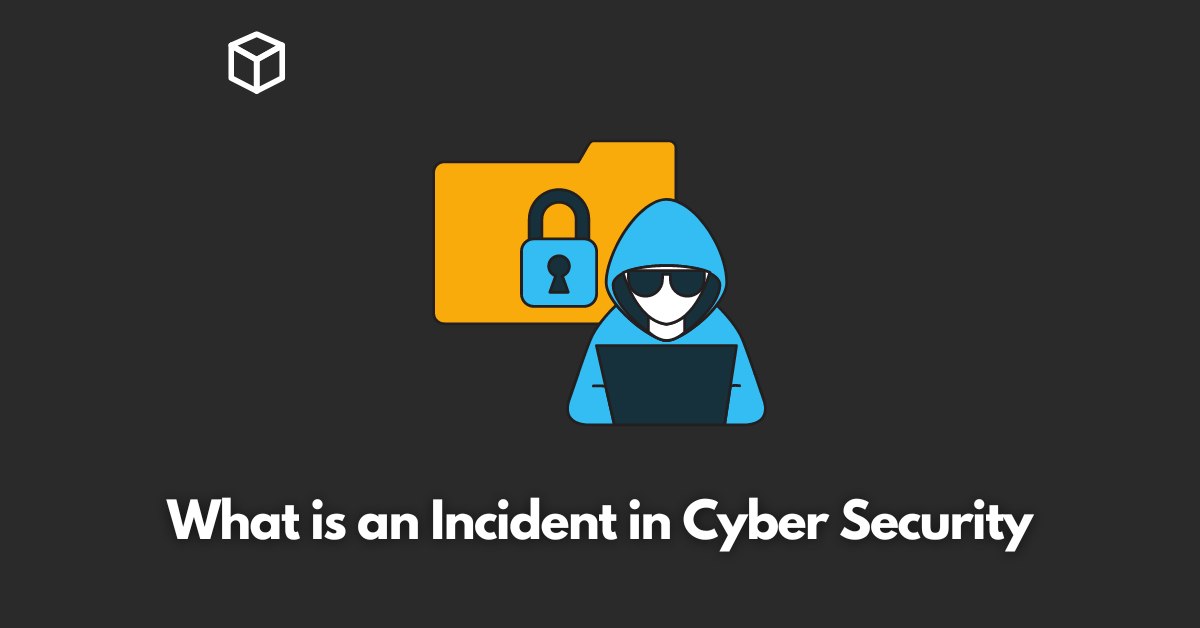As technology continues to advance with the passage of time, so does the threat of cyber attacks on organizations.
One of the most critical aspects of protecting against these threats is incident response.
In this article, we will define what an incident in cybersecurity is, explore the different types of incidents that can occur, and outline the steps for effective incident response.
What is an Incident in Cybersecurity
An incident in cybersecurity refers to a security breach or attempted breach of an organization’s information systems.
This can include malware attacks, phishing attempts, denial of service attacks, insider threats, and advanced persistent threats.
Importance of incident response in cyber security
Incident response is crucial for any organization because it helps to minimize the damage caused by a cyber attack and allows the organization to quickly return to normal operations.
By having a plan in place and training employees on incident response procedures, organizations can be better prepared to handle cyber incidents when they occur.
Types of Incidents
Malware attacks
A malware attack is when a malicious software is used to gain unauthorized access to an organization’s information systems. This can include viruses, worms, and Trojan horses.
Phishing attacks
Phishing attacks are when an attacker uses social engineering techniques to trick individuals into providing sensitive information, such as login credentials or financial information. These attacks are often carried out through email or social media.
Denial of Service (DoS) attacks
A denial of service attack occurs when an attacker floods a network or server with traffic, causing it to become unavailable to legitimate users.
Insider threats
An insider threat is when a current or former employee, contractor, or business partner uses their access to sensitive information for unauthorized purposes.
Advanced Persistent Threats (APTs)
An advanced persistent threat (APT) is a prolonged and targeted cyber attack on an organization.
APTs are typically carried out by nation-states or other highly-skilled actors.
Steps of Incident Response
Develop incident response plan
An incident response plan is a document that outlines the procedures for handling a cyber incident.
It should include information on who to contact, what steps to take, and what information to gather.
Train employees on incident response procedures
Employees should be trained on incident response procedures so that they know what to do in the event of a cyber incident.
It can include training on how to identify phishing emails, how to respond to a malware attack, and how to report a suspected incident.
Identify that an incident has occurred
The first step in incident response is to identify that an incident has occurred.
It can be done by monitoring logs, reviewing security alerts, or by receiving reports from employees.
Determine the scope and nature of the incident
Once an incident has been identified, it is important to determine the scope and nature of the incident.
It includes identifying what systems and data have been affected, as well as determining the cause of the incident.
Take steps to contain the incident and prevent further damage
The next step is to take steps to contain the incident and prevent further damage.
This can include disconnecting affected systems from the network, implementing firewalls, or shutting down services.
Remove the cause of the incident
The next step is to remove the cause of the incident. This can include cleaning up malware, patching vulnerabilities, or revoking access for compromised accounts.
Restore normal operations
Once the cause of the incident has been removed, the next step is to restore normal operations.
This includes bringing affected systems and services back online, and ensuring that they are functioning properly.
It’s also important to verify that the incident has been fully resolved and that there is no residual risk.
Lessons Learned
The final step in incident response is to evaluate the incident and identify areas for improvement.
It includes reviewing the incident response plan, identifying gaps in security, and making recommendations for future incidents.
Conclusion
In this article, we defined what an incident in cybersecurity is, explored the different types of incidents that can occur, and outlined the steps for effective incident response.




